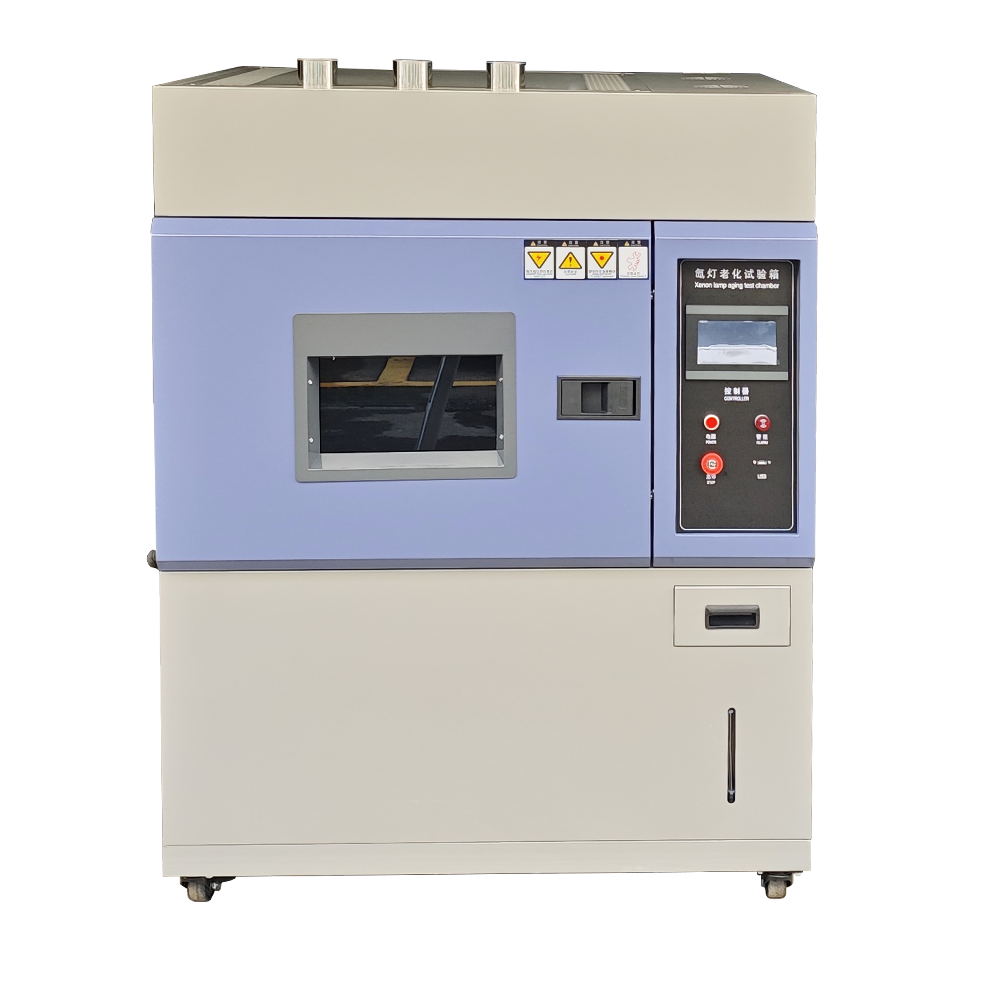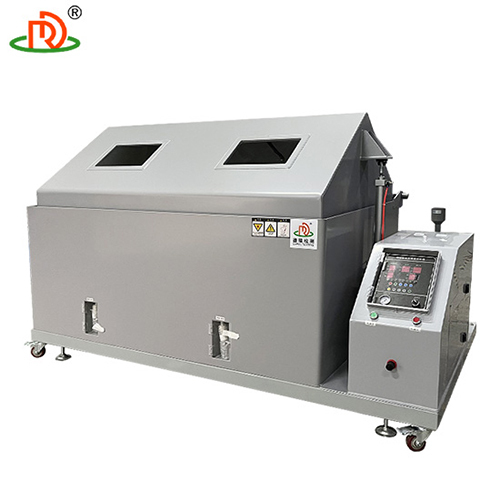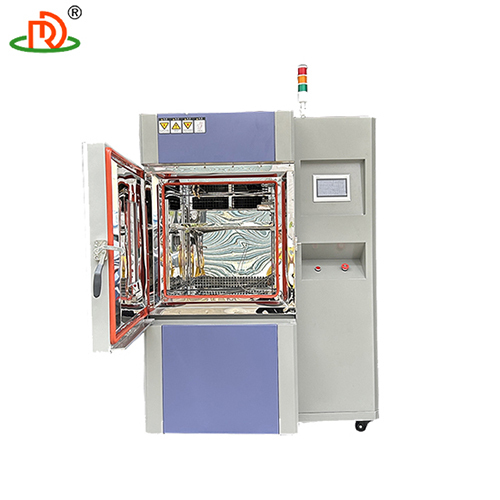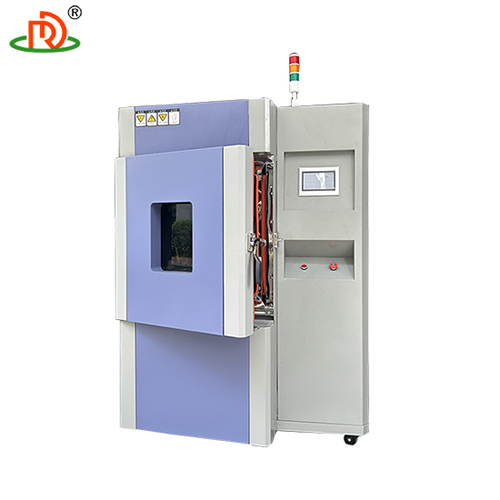
xenon environmental solar radiation test chamber
508005.0 INR/Unit
Product Details:
X
xenon environmental solar radiation test chamber Price And Quantity
- 508005.0 INR/Unit
- 1 Unit
xenon environmental solar radiation test chamber Trade Information
- Cash in Advance (CID)
- 90 Unit Per Month
- 5 Days
- All India
Product Description
Standard Features
| Model | DR-H301 |
| Internal dimension (WxDxH) | 500*600*500mm |
| External dimension (WxDxH) | 1000*1000*1750mm |
| Temperature range | RT+10~ 60 (suggest to use 402) |
| Temperature Fluctuation | 1 |
| Ozone concentration | 50~1000 pphm, adjustable |
| Ozone concentration deviation | 10% |
| Sample holder | SUS#304 stainless steel |
| Temperature controller | Programmable touch screen controller |
| Ozone concentration analysis | Concentration analysis meter |
| Ozone generator | High pressure silence discharge type |
| Protection system | Leakage, short circuit, over temperature, over heat |
| Test criteria | ASTM D1149, ISO 1431, JIS K6259... |
Xenon environmental solar radiation test chamber is a testing equipment used to simulate solar radiation environment, widely used in weather resistance testing of materials, electronic products, photovoltaic products and other fields. The following is a detailed explanation of its functions, working principles, and applications:
function
1. Simulating solar radiation: Simulating sunlight through xenon lamps, covering a wide range of wavelengths from ultraviolet to visible and even infrared, to simulate natural sunlight.
2. Environmental condition simulation: It can simulate various environmental conditions, such as temperature, humidity, condensation, rain, etc., to comprehensively evaluate the aging performance of materials in different environments.
3. Accelerated aging test: By using high-intensity light radiation and controllable environmental conditions, the aging process of the sample is accelerated to more quickly evaluate the environmental impacts it may encounter in actual use.
4. Multiple protection functions: including bulb overheating protection, automatic fan startup, automatic fan delay after shutdown, etc., to ensure the safe operation of the equipment.
Working principle
1. Light source simulation: Using a high-pressure xenon lamp as the light source, the light is converted into specific spectral components such as sunlight and ultraviolet light through a special filtering device, thereby simulating the effect of solar radiation.
2. Environmental control: The test chamber is equipped with temperature and humidity control systems inside, which can simulate a more realistic natural environment. By controlling parameters such as spectral distribution, radiation intensity, and irradiation time of the light source, it is possible to simulate testing environments under different solar radiation conditions.
3. Comprehensive testing: The equipment can be combined with other testing devices, such as temperature and humidity meters, ultraviolet meters, etc., to monitor and record the testing environment in real time.
application
1. Material weather resistance test: used to evaluate the aging performance of non-metallic materials and organic materials (such as paints, coatings, rubber, plastics, etc.) under solar radiation.
2. Electronic product testing: Evaluate the stability, durability, and functional performance of electronic products under long-term solar radiation.
3. Photovoltaic product testing: Testing the performance changes of photovoltaic products under simulated solar radiation environment, providing important basis for product design, production and use.
4. Automotive industry: used to test the weather resistance and aging performance of automotive components in simulated natural environments.
There are various weather resistance testing standards applicable to outdoor building materials, including international standards, national standards, and other certification standards. Here are some of the main weather resistance testing standards:
international standard
1. ISO 4892
The artificial climate testing method using ultraviolet irradiation and water cooling to simulate weather is applicable to various materials such as plastics and coatings.
2. ASTM G154
The artificial solar climate testing method using fluorescent ultraviolet lamps to simulate solar radiation is commonly used for weather resistance testing of materials such as plastics, rubber, and coatings.
3. ASTM D4587
The artificial weather testing method using xenon lamps and ultraviolet radiation to simulate solar spectra is widely used for weather resistance testing of materials such as plastics, coatings, textiles, etc.
national standard
1. GB/T 35169-2017
The weather resistance test method for building external wall insulation systems is under the jurisdiction of the National Technical Committee for Standardization of Thermal Insulation Materials and is applicable to the weather resistance testing of building external wall insulation systems.
2. GB/T 16585-1996
The artificial climate aging (fluorescent ultraviolet lamp) test method for vulcanized rubber is applicable to the artificial accelerated aging test of vulcanized rubber.
3. GB/T 9276-1996
Coating natural climate exposure test method, suitable for long-term exposure testing of coatings in natural climate environments.
4. GB/T 22040-2008
Requirements and testing methods for weather resistance of plastic products for facilities along highways, applicable to outdoor plastic products for facilities along highways, glass fiber reinforced plastic products, and facilities coated with mechanical anti-corrosion coatings.
5. JG/T 429-2014
The weather resistance test method for external wall insulation systems is applicable to the weather resistance testing of external wall insulation systems.
Other certification standards
1. CODEMARK certification
The international certification systems of Australia and New Zealand rigorously test the weather resistance and fire resistance of building materials, including exposure tests, artificial climate aging tests, chemical aging tests, etc.
test method
1. Natural climate testing
Expose the material directly to the natural environment and test its weather resistance under real climatic conditions.
2. Outdoor enhanced exposure
Use solar trackers or centralized processing systems to accelerate the aging process of materials in outdoor environments.
3. Laboratory simulation
Using special environmental testing chambers and artificial light sources to simulate natural climate conditions for accelerated aging tests.
Through these standards and testing methods, the weather resistance of outdoor building materials can be comprehensively evaluated under different environmental conditions, ensuring their long-term stability and safety.
Tell us about your requirement

Price:
Quantity
Select Unit
- 50
- 100
- 200
- 250
- 500
- 1000+
Additional detail
Mobile number
Email








 English
English Spanish
Spanish French
French German
German Italian
Italian Chinese (Simplified)
Chinese (Simplified) Japanese
Japanese Korean
Korean Arabic
Arabic Portuguese
Portuguese